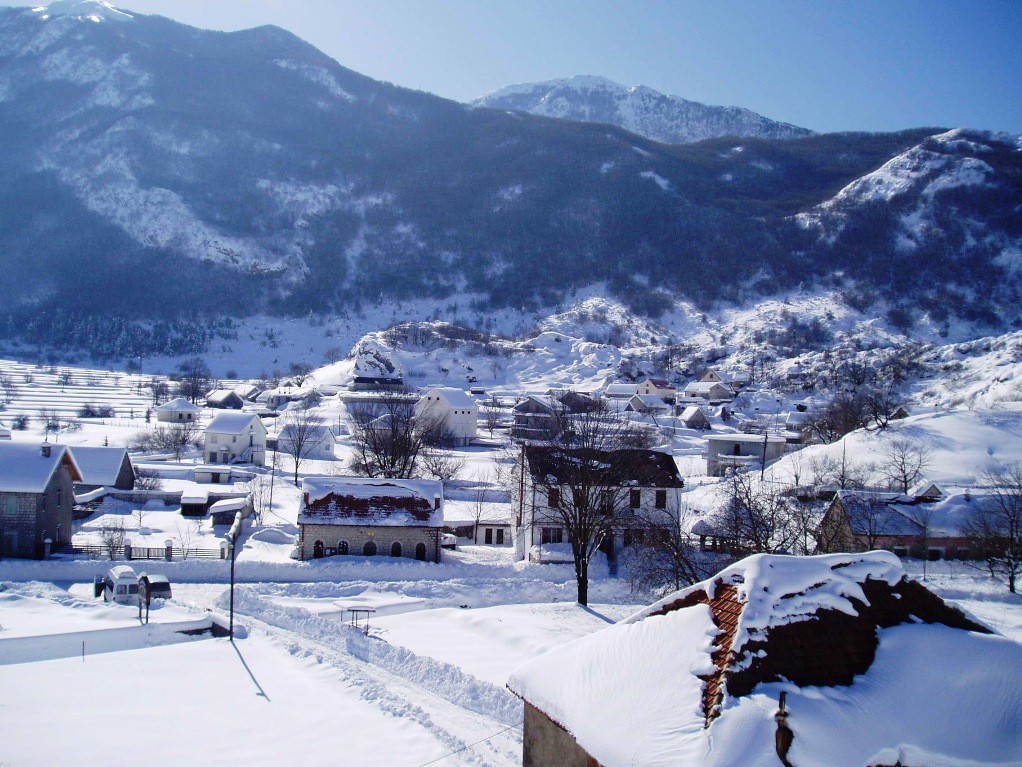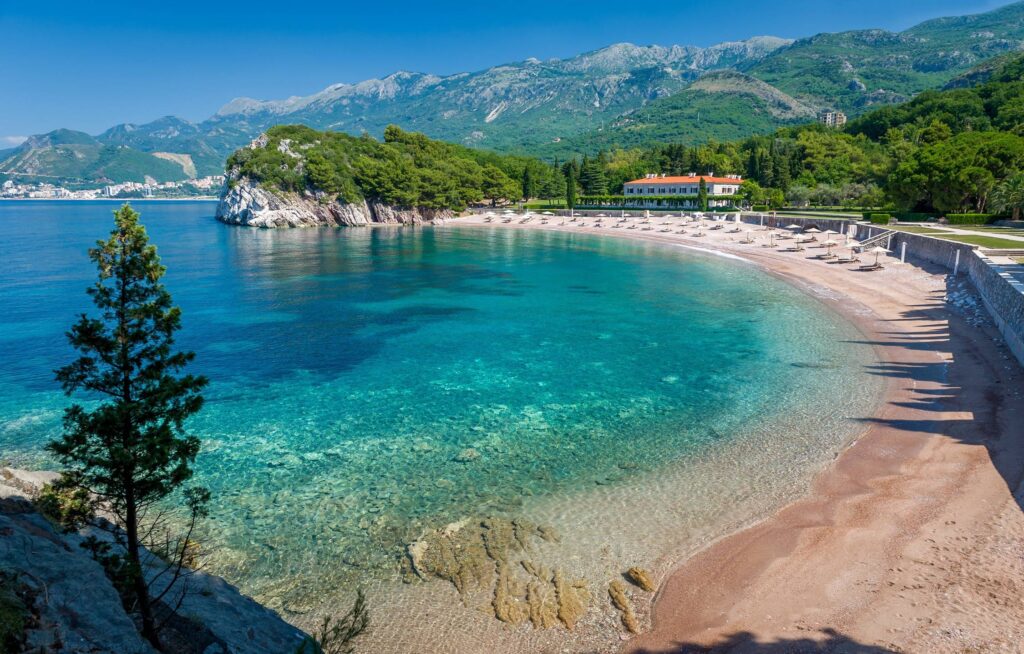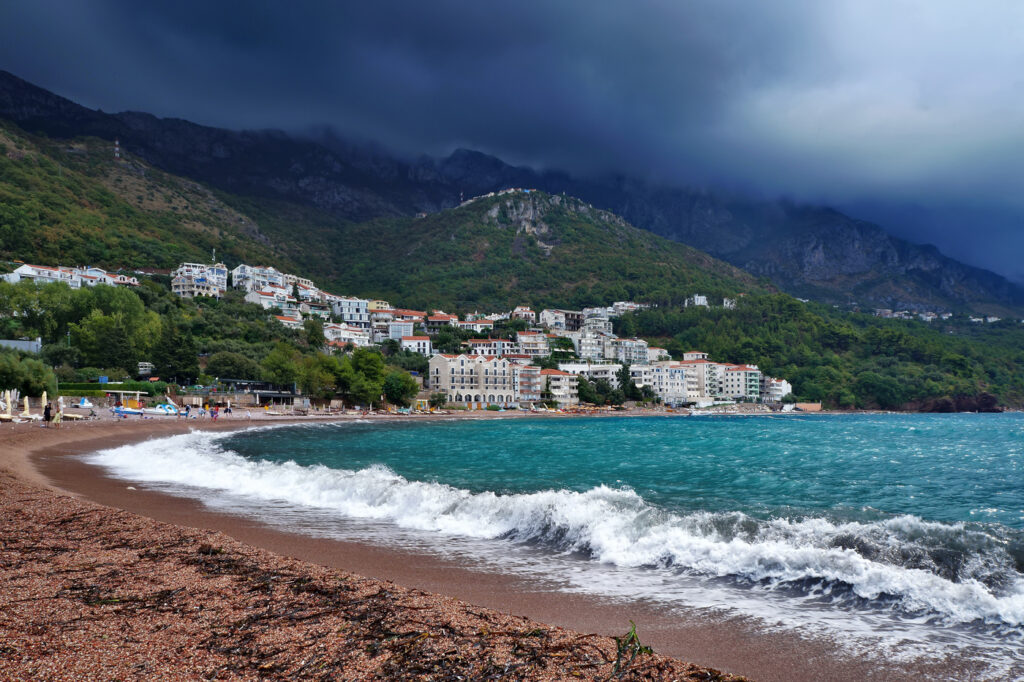Climate in Montenegro - Average Annual Temperatures and Seasonal Variations
The climate in Montenegro varies greatly depending on where you are in the country. Along the coast, in cities like Budva and Kotor, the weather is usually mild, with average annual temperatures ranging from 15 to 18°C (59-64°F). Here, the climate in Montenegro features hot summers and mild winters, making the coastal areas a popular destination for beach lovers.
In the mountains, such as in Durmitor and Bjelasica, the climate in Montenegro is much cooler. The average temperature in these areas stays around 5 to 7°C (41-45°F) throughout the year. Winters in the mountains can be quite cold, with temperatures often dropping to -10°C (14°F) or even lower. This makes the mountains perfect for winter sports like skiing. However, when spring arrives, the snow melts, and the climate in Montenegro changes again, revealing green valleys and blooming flowers, ideal for hiking.
Summers in Montenegro are warm, especially on the coast, where temperatures can reach up to 35°C (95°F). The climate in Montenegro during these months is perfect for swimming and sunbathing. In the mountains, however, it’s cooler, providing a nice escape from the heat. As autumn arrives, the temperatures gradually drop, and the climate in Montenegro becomes milder, making it a great time for exploring nature and enjoying outdoor activities.

Climate in Montenegro During Winter - Temperature Patterns and Humidity in the Cold Months
The climate in Montenegro during winter offers a diverse range of conditions, making it a unique experience depending on where you are. From the snowy peaks of the mountains to the milder coastal regions, winter in Montenegro showcases the country’s varied landscapes in different ways.
In the mountainous regions, such as Durmitor and Bjelasica, the climate in Montenegro during winter is characterized by cold temperatures and heavy snowfall. Average temperatures in these areas often range between -5 and 0°C (23-32°F), with snow covering the ground for most of the winter. These conditions create ideal settings for winter sports, attracting skiers and snowboarders from around the world. The dry, crisp air in the mountains enhances the feeling of cold, making the climate in Montenegro here a true winter experience.
On the coast, the climate in Montenegro is much milder during winter. Temperatures generally stay between 8 and 12°C (46-54°F), with snow being a rare occurrence. Instead, the coast experiences more rainfall, which keeps the landscape green and vibrant even in the colder months. The higher humidity levels make the air feel cooler than the actual temperature, but the climate in Montenegro along the coast remains comfortable for outdoor activities, even in winter.

Climate in Montenegro During Summer - The Hot Season and Its Characteristics
The climate in Montenegro during the summer months is a time of warmth and sunshine, offering a stark contrast to the colder seasons. As summer sets in, the entire country experiences a rise in temperatures, but the way summer feels can vary depending on the region.
In the mountainous areas, the climate in Montenegro during summer is pleasant and refreshing. While temperatures can reach up to 25°C (77°F) during the day, the nights remain cool, often dropping to around 10-15°C (50-59°F). This makes the mountains a popular retreat during the hotter months, offering a break from the intense heat found elsewhere. The cool mountain breezes and lush green landscapes create an inviting atmosphere for hiking, camping, and exploring the natural beauty of Montenegro’s highlands.
Along the coast, the climate in Montenegro during summer is notably hotter. Daytime temperatures often climb to 30-35°C (86-95°F), with occasional peaks even higher. The warm Adriatic Sea, with temperatures around 25°C (77°F), provides the perfect conditions for swimming and water sports. The coastal towns and beaches come alive during this season, attracting both locals and tourists looking to enjoy the sun and sea. Despite the high temperatures, the climate in Montenegro on the coast is tempered by sea breezes, making the heat more bearable and the evenings particularly enjoyable for strolls and dining outdoors.

Climate in Montenegro - Humidity and Precipitation How Weather Shapes Landscapes and Lifestyle
The climate in Montenegro is not only defined by its temperatures but also by its levels of humidity and precipitation, which play a crucial role in shaping the country’s landscapes and the daily lives of its people. Throughout the year, these factors influence everything from the lushness of the forests to the patterns of agricultural activities.
In the mountainous regions, the climate in Montenegro is characterized by lower humidity and significant snowfall during the winter months. As spring arrives, the melting snow provides essential water for rivers and lakes, contributing to the rich biodiversity of the area. Summer in the mountains, while cooler, still experiences occasional rain showers that keep the meadows green and the forests dense. This combination of rainfall and cooler temperatures makes the mountains a fertile area for various plant species and supports traditional pastoral activities like grazing.
On the coast, the climate in Montenegro is marked by higher humidity, especially during the warmer months. The proximity to the Adriatic Sea means that coastal areas experience more frequent rain showers, particularly in the autumn and spring. This rainfall is vital for the Mediterranean vegetation that characterizes the region, including olive groves, vineyards, and citrus orchards. The climate in Montenegro along the coast also impacts the local way of life, with many traditional practices, such as fishing and farming, being closely tied to the seasonal patterns of rain and humidity.
Throughout the year, the interplay of humidity and precipitation in the climate in Montenegro ensures that the country remains a vibrant and diverse environment, supporting a wide range of activities and lifestyles. From the green mountains to the fertile coast, these weather patterns help define the unique charm and beauty of Montenegro.

